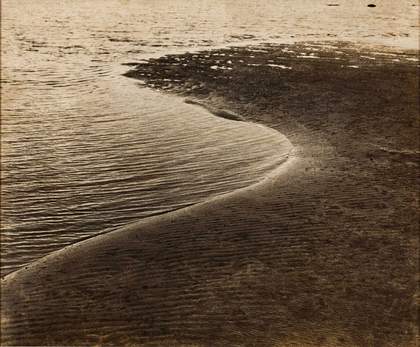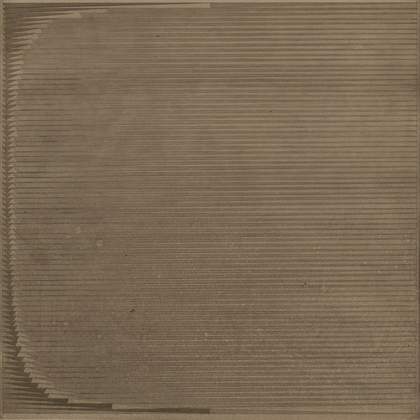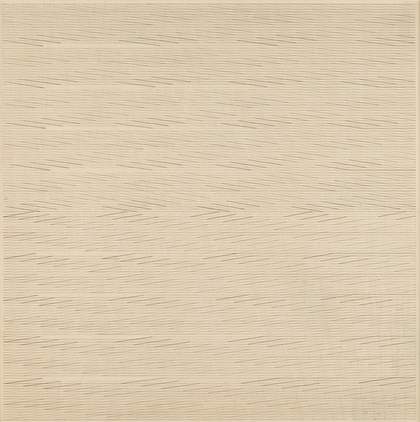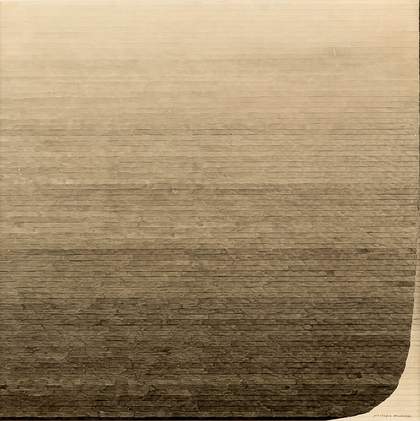Nasreen Mohamedi is best known to us for her spare, refined works on paper and a small body of photographs. Of the latter, we are told she may never have intended for them to be displayed, they were made instead as private and experimental studies in light, landscape and composition. She was simple in her manners, almost austere, polishing her floors to a shine and doing her own cleaning in a spartan apartment-cum-studio space in Baroda. The practice as we know it displays a breathtaking range of precision and control, a very deliberate progression of line, shape and perspective, allowing for almost infinite variation within minimalist geometric formations, arcs and lines of varying width. These monochromatic works are unlike anything, we might assume, that was current in modernism in India as practiced by her peers, who were more beholden to the charm of painting with oil paint on canvas, combining abstract expressionism and local aesthetics. And with her early death, to a rare condition which affected her muscle control, the absolute antithesis to a practice led by extreme precision, she becomes a tragic and enigmatic figure, the elegant braid and crisp, pale saris seen in photographs only adding to her mysterious allure.
Even though we were born in the same city, I first encountered Mohamedi’s work in an exhibition in Milton Keynes. Despite the care taken by the curators, she was, as is perhaps inevitable when shown in this context, presented as a discovery – an exception, a woman, reclaimed and given her rightful place. Non-representational and unapologetically modern, unencumbered by any kind of essential Indian idiom these undated works – each a revelation in terms of the limits of space and form it attempted to extend – were unique and unparalleled, her formal similarity to Agnes Martin something of a coincidence, though she had trained in London and Paris and was aware of constructivism and minimalism. Despite her lively participation in their social milieu and within the art department at Majaraja Sayajirao University, Baroda, one may conjecture that in contrast with the more commercially successful and rather male-dominated circulation of the Progressive painters – Souza, Husain et al – she may have stood too far apart. She often gave away work, often discarded drawings not quite perfect enough, and was far from prolific.
Accompanying the exhibition were video interviews; of Jeram Patel, her friend, who described her seriousness and discipline with great affection, and the critic Geeta Kapur who raised more metaphysical concerns but also with a deeply personal engagement with the artist. A picture of the clean lines and surfaces of Mohamedi’s apartment supports a hint of asceticism – it is true, the floor was a gleaming reflective surface.
html PUBLIC "-//W3C//DTD HTML 4.0 Transitional//EN" "http://www.w3.org/TR/REC-html40/loose.dtd"

Nasreen Mohamedi, Untitled c1970s
Photographic print on paper, 280 x 343mm
© courtesy Chatterkee & Lal
I read at the end of Kapur’s essay that Mohamedi died and was buried in Kihim, near the beach house, spending her last days by the Arabian Sea. As she wrote in her diary:
14 May 1971
Kihim
The waves of the sea and sand
From the waves in my mind
Notes
MK Gallery
Nasreen Mohamedi: Notes
Reflections on Indian Modernism
5 September - 15 November 2009
curated by Suman Gopinath and Grant Watson
Geeta Kapur Elegy for an Unclaimed Beloved in When Was Modernism, Tulika Books 2000 pp.61-85
Richard Bartholomew The Art Critic Bart 2012 pp.573-5
All diary quotes are taken from the diary entries reprinted in Drawing Space Contemporary Indian Drawing Ed. Sarah Campbell and Grant Watson InIVA 2000 pp.38-51



